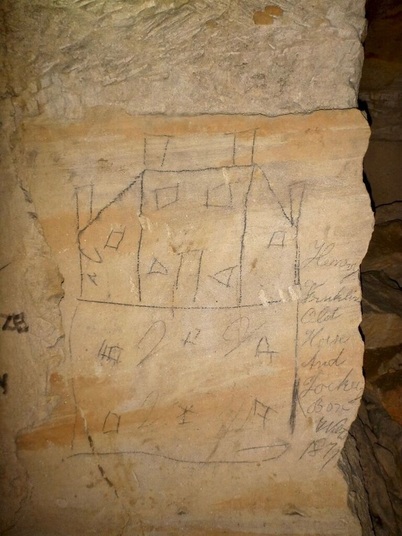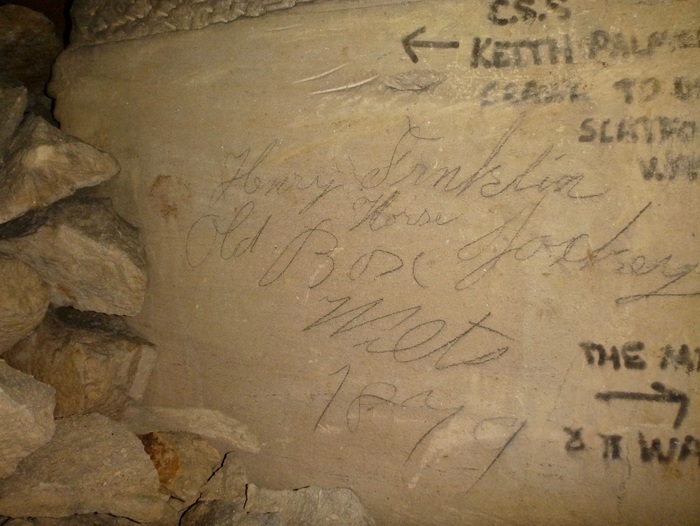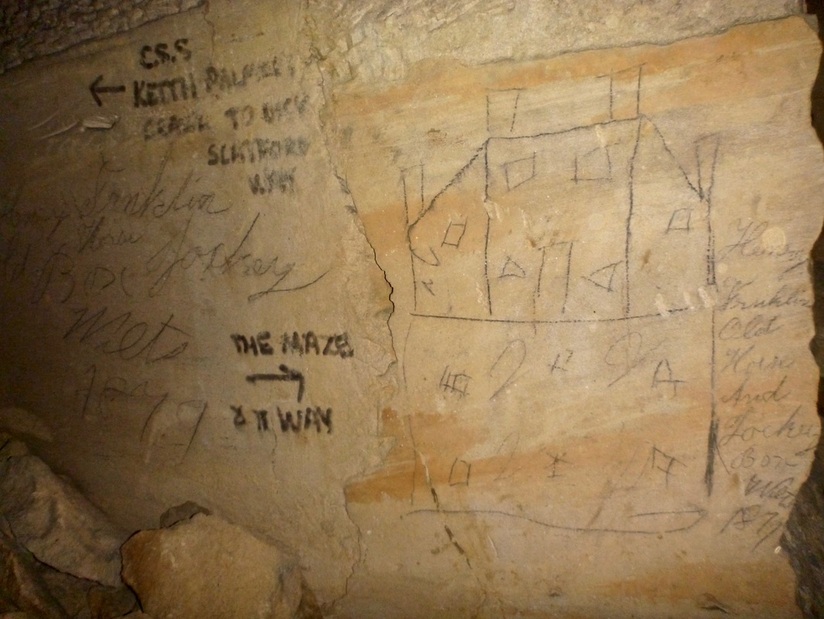Henry Franklin at Old Jockey Illustrations by Mark Jenkinson January 2016
|
If you know the area of southern Box, you will immediately recognise this house as Old Jockey House. The house was built in 1737 as a coaching inn to service the carriage trade which came along the Old Bath Road after this had been turnpiked (gated) about twenty-five years earlier.
The inn was a place to change horses and to refresh visitors before their entrance into Bath. A curtain wall linked the main house with the cottages next door, identifying the two as being under the same ownership. At the side of the building there was a covered way allowing travellers weather-proofed access to reception and dining rooms. A well in the yard behind the house supplied water. The house itself still shows marks where rings were fixed into the front wall to tether horses and until recently the stone mounting-block stood outside. The large, rather grand, cellar provided cool storage facilities for beer and provisions. By 1753, the reputation of the inn was such that the whole area was called Horse and Jockey after the pub in an Act of Parliament when the Melksham to Seend road was turnpiked in that year. |
These photos show much more than the house because they have a date of 1879 and the name of a resident, Henry Franklin. The Franklin Family story was given earlier on the website where Harry George Franklin was described as aged 10 living at the Old Jockey with his mother.
We don't know why Henry Franklin's name and address is recorded in the quarry. Nor do do we know if he was the author of the illustration and narrative. There may be something unusal about the reference because the details are recorded twice, as you can see from the photo below. If Henry was indeed the Harry George of Old Jockey then he would have been just a child of ten or eleven years, peerhaps working down the quarry to assist a family member and practising the literacy skills he had recently learnt at the newly opened Box Schools.
John and Maureen Franklin Added
Harry George (1869-1947) was the son of Henry John Franklin (1846-1899), who was a stone quarryman. The tragic story of Henry John's death on 21 September 1899 has been recorded as:
Age: 53
Occupation: Miner
Location: Corsham No.6 Stone
Owner: Bath Stone Firms Ltd
Notes: Fall of roof in his working place. The usual roof bed is not good in this part of the mine and comes down. In this case it split from a clay joint and the other two sides being free it fell away from the fourth and killed him. It was about 8ft x 6ft x 11in thinning out to 5ft on the free sides.[1]
Perhaps Harry George was a young child helping his father underground in the late 1800s.
Do readers have any other suggestions about why Henry's name was recorded?
Reference
[1] Courtesy of The Coalmining History Resource Centre at their fascinating website care of Raleys Solicitors:
http://www.cmhrc.co.uk/site/database/result/64280.html
[1] Courtesy of The Coalmining History Resource Centre at their fascinating website care of Raleys Solicitors:
http://www.cmhrc.co.uk/site/database/result/64280.html


